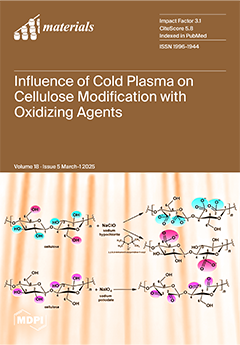Nanoarchitectonics influences the properties of objects at micro- and even macro-scales, aiming to develop better structures for protection of product. Although its applications were analyzed in different areas, nanoarchitectonics of food packaging—the focus of this review—has not been discussed, to the best of
[...] Read more.
Nanoarchitectonics influences the properties of objects at micro- and even macro-scales, aiming to develop better structures for protection of product. Although its applications were analyzed in different areas, nanoarchitectonics of food packaging—the focus of this review—has not been discussed, to the best of our knowledge. The (A) structural and (B) functional hierarchy of food packaging is discussed here for the enhancement of protection, extending shelf-life, and preserving the nutritional quality of diverse products including meat, fish, dairy, fruits, vegetables, gelled items, and beverages. Interestingly, the structure and design of packaging for these diverse products often possess similar principles and methods including active packaging, gas permeation control, sensor incorporation, UV/pulsed light processing, and thermal/plasma treatment. Here, nanoarchitechtonics serves as the unifying component, enabling protection against oxidation, light, microbial contamination, temperature, and mechanical actions. Finally, materials are an essential consideration in food packaging, particularly beyond commonly used polyethylene (PE), polypropylene (PP), polyethylene terephthalate (PET), polystyrene (PS), and polyvinyl chloride (PVC) plastics, with emphasis on biodegradable (polybutylene succinate (PBS), polyvinyl alcohol (PVA), polycaprolactone (PCL), and polybutylene adipate co-terephthalate (PBAT)) as well as green even edible (bio)-materials: polysaccharides (starch, cellulose, pectin, gum, zein, alginate, agar, galactan, ulvan, galactomannan, laccase, chitin, chitosan, hyaluronic acid, etc.). Nanoarchitechnotics design of these materials eventually determines the level of food protection as well as the sustainability of the processes. Marketing, safety, sustainability, and ethics are also discussed in the context of industrial viability and consumer satisfaction.
Full article






